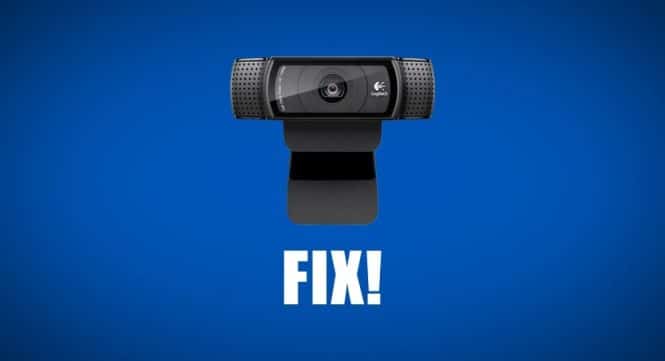The camera does not work in Windows 10… why? There may be many reasons why the Windows 10 camera has stopped working. There are some more frustrating things than when a Windows 10 camera stops working properly. Whether you have an integrated webcam, like Microsoft Surface devices, or a separate hardware component, there are a variety of tips and tricks you can use to solve the problem.
The causes of Windows 10 webcam bugs
A webcam that does not work on a Windows 10 computer, tablet or laptop is generally the result of defective or obsolete drivers. Another cause is incorrect settings in the Windows 10 operating system or in the associated webcam software, which can disable or hide a webcam.
How to repair the Windows 10 webcam
- Disconnect and reconnect it. If your webcam connects to your Windows 10 device via USB, this is a quick way to solve the problem. Switching the webcam off and on will reset it. A restore can also force your Windows 10 device to detect the camera once it is connected.
- Try connecting it to another USB port. If your Windows 10 device doesn’t detect your USB webcam at all, try another port.
- Restart your computer. It’s a trick as old as the weather, but it works. Restarting a Windows 10 computer, laptop or tablet can often solve a variety of problems, including a broken webcam.
- Disconnect and restart. Try a combination of the two previous solutions. Disconnect the USB webcam, restart the computer, then reconnect the webcam.
- Check for Windows updates. The Windows 10 update can fix any problems and download firmware and driver updates that can improve the performance of your webcam.
- Check the camera body. It is possible that the webcam has broken and needs repair. If no barrel marks or small dents are visible, the best way to check if it is broken is to connect it to another compatible computer or laptop. If it doesn’t even work on that device, you have your answer. If you don’t have another webcam-compatible computer, laptop or tablet, try connecting the webcam to an Xbox One console.
- Check the app you are using with the webcam. The webcam may work, but an app is causing problems. The easiest way to check this is to try using the camera with another Windows 10 app like Skype, Instagram or Camera. If the app is the problem, you may need to grant access to the camera in the app settings.
- Check your privacy settings. In Windows 10, you need to allow apps to access your webcam before they can detect it and use it. Go to Settings> Privacy> Camcorder and activate Allow apps to access the camera. With this general option, you will also see the switches for the individual apps. It’s worth spending some time scrolling through this list to enable or disable webcam access for each app so you can get the camera working for the apps you want. So you will know which apps can and cannot access your webcam.
- Check the webcam software settings. Some webcams are equipped with software that manages the settings of the device. The Lenovo Settings app, for example, has a Privacy Mode setting that completely disables the webcam.
- Check your Bluetooth connection if you are using a wireless webcam. Make sure Bluetooth is enabled in Windows 10 so that your device can detect it. You can do this by opening the Windows 10 Operations Center and clicking on the Bluetooth box. To open the Operations Center in Windows 10, click the Notifications icon in the lower right corner of the taskbar. Alternatively, you can swipe a finger from the right side of the screen if your device has a touchscreen.
- Check if the camera is disabled in Windows 10 Device Manager. To enable it again, open Device Manager and click the arrow to the left of Cameras to view all your webcams. If there is a small arrow icon on the camera icon, it means that it is disabled. You can reactivate it by right-clicking on it and clicking Enable. To open Device Manager, look for it in the search box in the Windows 10 taskbar.
- Disable and enable the webcam in Device Manager. This way it can sometimes activate Windows 10 to notice a device. Find the camera in Device Manager as in the previous step, right-click on the camera name and click Disable. Then right-click again and choose Enable. Do not click Uninstall.
Also read- How to know if they are spying on me through the webcam
- Update the webcam driver. Device drivers keep the devices working properly and updates are often needed to maintain compatibility with the latest versions of Windows. To check for a new driver for your webcam, locate the webcam again in Device Manager, right-click on it, click Update Driver> Automatically search for updated driver software.
- Restore the driver to a previous version. Occasionally a new version of a driver negatively affects the device. To restore, locate the camera in Device Manager, right-click on it and click Properties> Drivers> Reset Driver> Yes. Restart Windows 10 at the end of the process.
- Check compatibility with Windows 10. Some webcams have been created for previous versions of Windows and may not be compatible with desktop computers, tablets or laptops with Windows 10. One way to verify this is to look at the packaging or on the manuals supplied with the camera. Another is to locate it in the Device Manager, right-click on its name and click Properties> Drivers> Driver Details and look in the list of files for a file called stream.sys. Unfortunately, if you see this file, it means that your webcam is too old and is not compatible with Windows 10. In this case, you will have no choice but to buy a new one.

